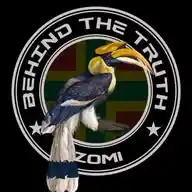
𝔹𝔼ℍ𝕀ℕ𝔻 𝕋ℍ𝔼 𝕋ℝ𝕌𝕋ℍ (𝔹𝕋𝕋)
January 29, 2025 at 04:04 AM
*Day 10: Songs of the Ancestors*
For the Zomi, songs are more than melodies; they are the heartbeat of a people, resonating across generations. In a culture without written records, music became the primary medium for preserving history, values, and identity. These ancestral songs—rich in emotion and layered with meaning—served as the Zomi’s living archives, capturing the essence of their way of life.
Songs like _Lai Laa_ and _Tawn Laa_ were integral to the Zomi oral tradition. They preserved not just stories but the very soul of the Zomi people. _Lai Hla_ celebrated warriors and their sacrifices, while _Tawn Hla_ chronicled the trials of migration, offering both a record of resilience and a guide for future generations. As observed, *“Songs of the Zomi recorded personal and community history, recounting losses, victories, and triumphs of the human spirit.”*
Music was deeply embedded in the rhythm of Zomi's life, particularly during festivals like _Khawdou_. This post-harvest celebration was as much about songs as it was about feasting and rituals. During _Khawdou_, villagers sang _Khuai-aih la (bee-luring songs)_ that expressed joy, gratitude, and connection to nature.
One such song went:
_(a)Mual ka bawl mual ka bawl e,_
_Laamtual diing mual ka bawl e,_
_(b) Laamtual zil in za hen aw,_
_Luai naubang kivei leng e._
_(a) I level the ground I level the ground,_
_I level the ground for the dancing podium,_
_(b) Let the ground be large and spacious,_
_So that I can dance like a child._
These songs were not mere entertainment; they were woven into the spiritual and practical fabric of life. Ritual songs, for instance, played a significant role in pre-Christian Zomi society. Sung during sacrifices or ceremonies, they honoured ancestors, sought blessings, or warded off spirits. Even after the Zomi embraced Christianity, music continued to serve as a bridge between the past and the present. Hymns were adapted to traditional melodies, preserving the communal spirit of their forebears while embracing a new faith.
In moments of celebration or mourning, songs carried a weight that transcended words. During feasts, they chronicled the achievements of individuals and communities. At funerals, they offered solace, recounting the lives of the departed in lyrical form. As one study notes, *“The recording of history through song ensured that even twenty generations later, the Zomi people could sing of their ancestors as if they were still among them.”*
Today, these oral traditions face new challenges. The rise of digital media and the pull of globalization have drawn younger generations away from traditional practices. However, efforts are underway to preserve and revitalize these songs. Cultural organizations and Zomi leaders have begun to document, archive, and even modernize traditional music, ensuring that it remains a vibrant part of Zomi's identity. As noted, *“It is not enough to remember these songs; they must be sung, shared, and lived to keep the spirit of the Zomi alive.”*
*Reflection:*
How do we preserve oral traditions in an age dominated by digital communication? Can technology become an ally in ensuring that these melodies endure for generations to come?
*Quote to Highlight:*
“In the melodies of their songs, the Zomi carried the weight of their past and the hope of their future.”
BTT
🔴🟡🟢
https://whatsapp.com/channel/0029VaYCqe71yT229xZ6f42y
❤️
👍
😂
🐖
53